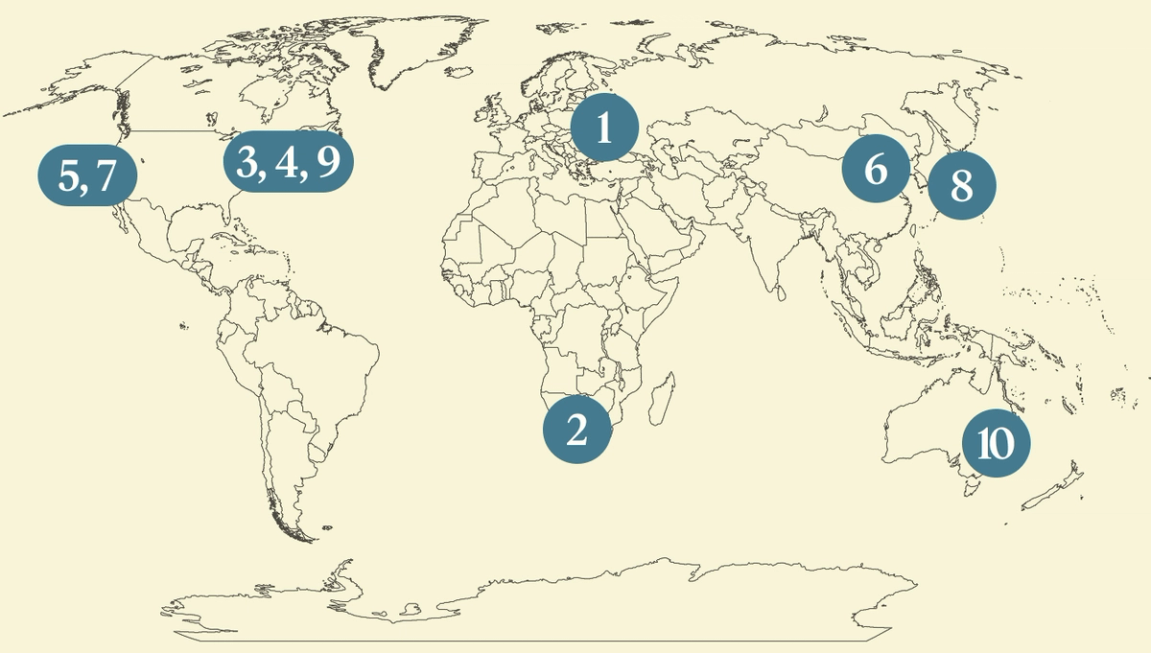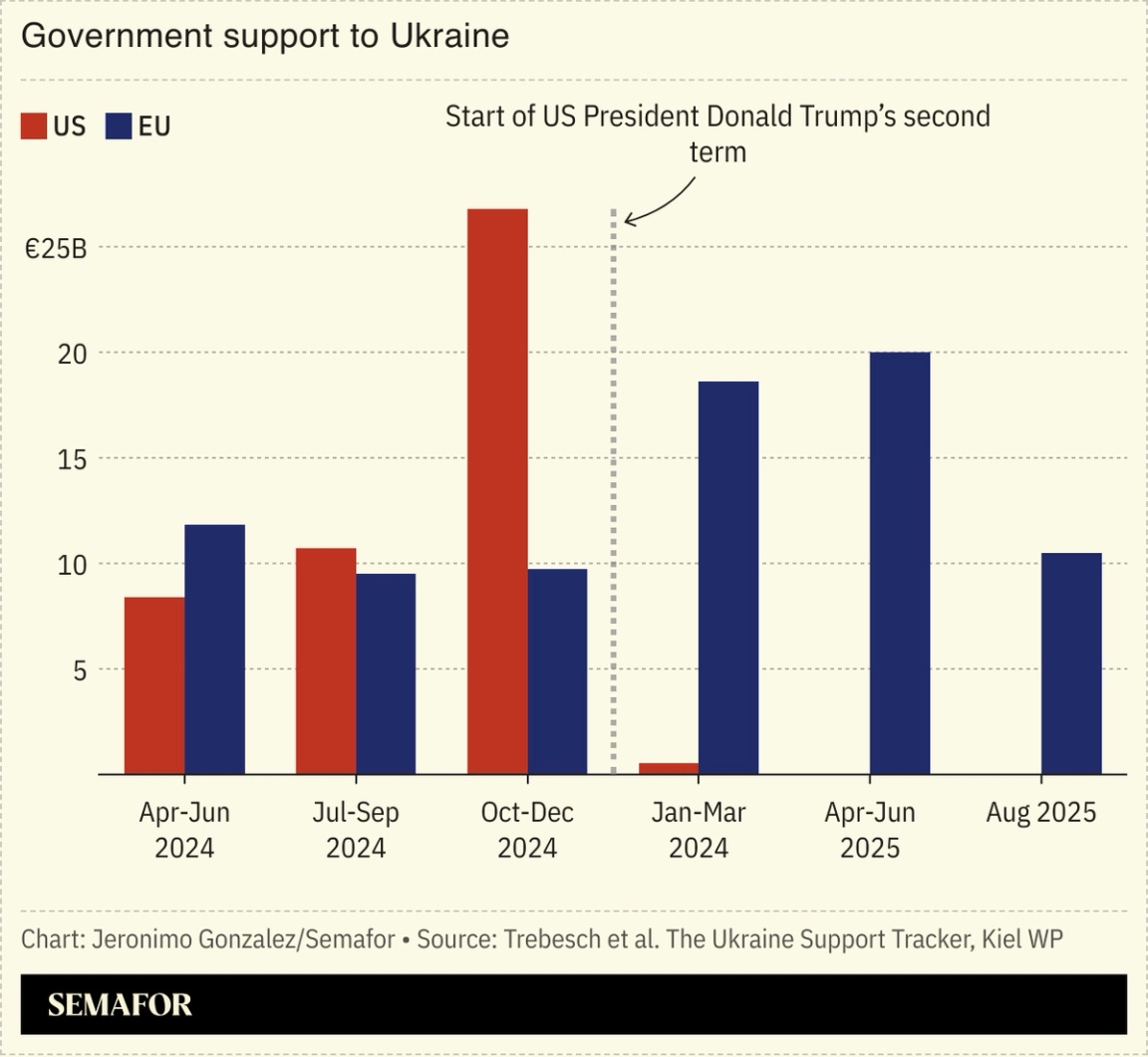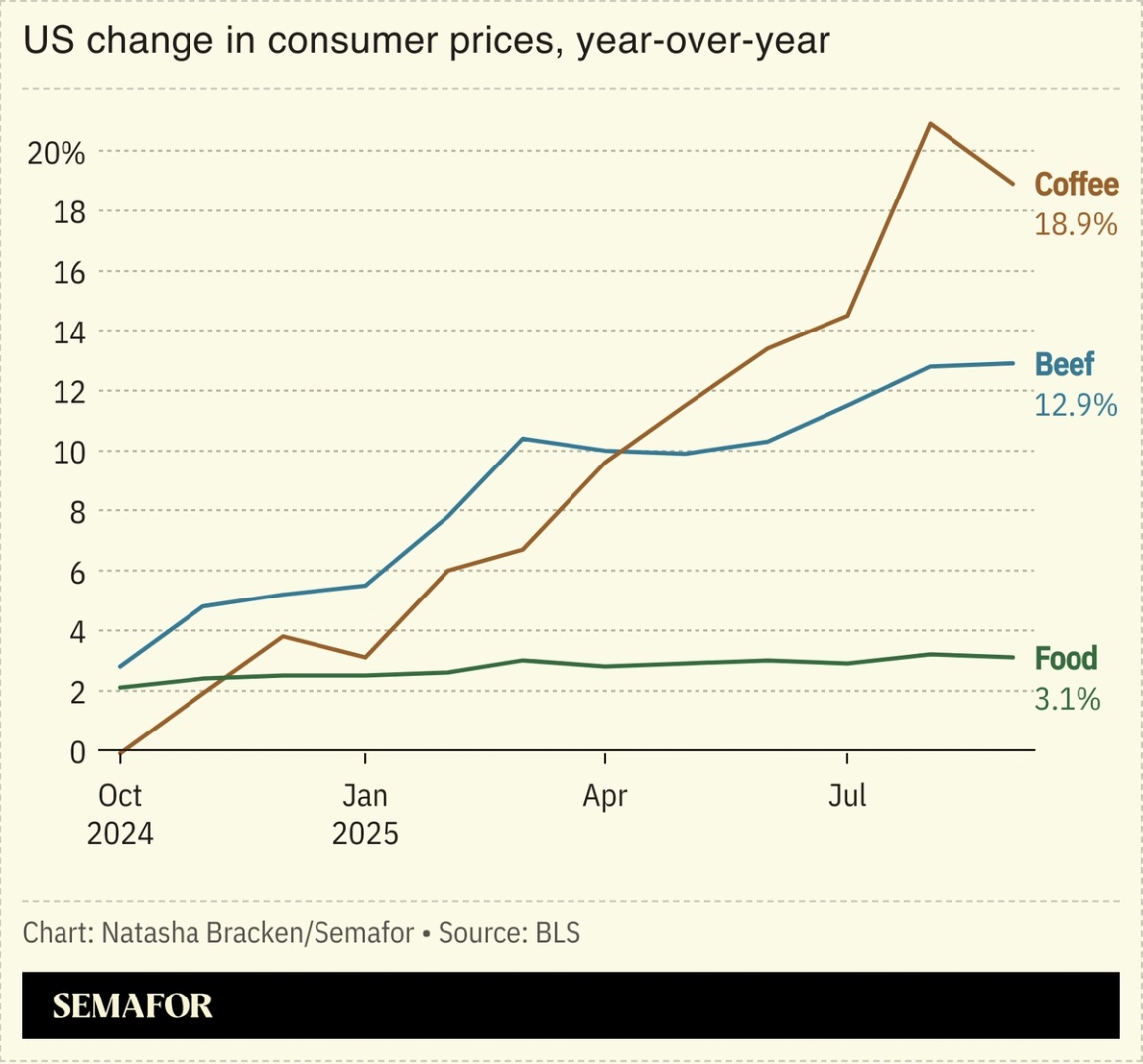| | The US peace plan for Ukraine attracts criticism, Trump threatens Dems with execution, and a former ͏ ͏ ͏ ͏ ͏ ͏ |
| |   Johannesburg Johannesburg |   Tokyo Tokyo |   Sydney Sydney |
 | Flagship |  |
| |
|
The World Today |  - US’ Ukraine plan criticized
- US-S. Africa G20 tensions
- Trump halts Brazil tariffs
- Trump Dem ‘sedition’ claim
- Tech stocks slide
- Robotaxi ‘tipping point’
- AI’s moving goalposts
- Japan’s nuclear revival
- Rapper jailed for China link
- Ashes get under way
 A posthumous retrospective of an ‘unsettling, disquieting’ artist in Denmark. |
|
US peace plan for Ukraine under fire |
 The US is reportedly pressuring Ukraine to accept painful compromises as part of a peace deal with Russia, an agreement that analysts largely panned. The 28-point proposal would require Kyiv to give up the Donbas region and limit the size of its military, though according to Axios, it also includes a NATO-style security guarantee. Experts have criticized Washington for making excessive demands of Ukrainian President Volodymyr Zelenskyy while asking little of his Russian counterpart Vladimir Putin, and for largely excluding Kyiv from the drafting of peace plans. “As long as Trump thinks that he can end this war with Putin and without Zelensky and Ukraine, he will have to wait a whole lot longer,” an Obama-era NATO envoy wrote. |
|
US, S. Africa G20 spat deepens |
 Yves Herman/Reuters Yves Herman/ReutersTensions intensified between the US and South Africa after they exchanged conflicting remarks about whether American officials would attend the upcoming G20 summit in Johannesburg. The dispute — centered on US President Donald Trump’s boycott of the meeting over disputed allegations that Pretoria discriminates against its white population — threatened to sap attention from the talks, which South African President Cyril Ramaphosa wants to focus on issues such as global inequality and debt restructuring. Yet the lack of high-level buy-in means any progress may be limited: Along with Trump, the leaders of Argentina, China, Indonesia, and Mexico are also skipping what will be the first G20 on African soil. |
|
Trump walks back Brazil tariffs |
 US President Donald Trump lifted tariffs on a raft of Brazilian agricultural products, a reversal of his trade policy that comes in response to rising domestic food costs. Duties will be scrapped on Brazilian imports including beef, coffee, and fruits, a move that follows Washington’s lifting of levies on foodstuffs from several Latin American countries and the Philippines. Trump had imposed 40% tariffs on Brazil — with which the US has a trade surplus — in response to what he said was Brasília’s unjust prosecution of rightist former President Jair Bolsonaro. The change comes as Trump’s economic approval rating plummets amid rising inflation, with several polls showing only around a third of respondents agree with his handling of the economy. |
|
Trump threatens Democrats |
 Frank Robichon/Reuters Frank Robichon/ReutersUS President Donald Trump launched a tirade against Democrats, as his control over the Republican party appeared to wane. Trump accused six Congressional Democrats of “SEDITIOUS BEHAVIOR, punishable by DEATH” for appearing in a video that urged military service members to disobey “illegal orders.” Even the Senate majority leader, a Republican, voiced dismay at the president’s remarks. Republicans are increasingly willing to defy Trump: “The president’s total control has slipped” across an array of issues, Semafor’s politics team notes in our DC briefing. Trump’s acrimony with Democrats may be on full display soon, with an Oval Office meeting alongside New York City mayor-elect Zohran Mamdani — a democratic socialist whom Trump has vociferously opposed — due later today. |
|
Investors flee tech stocks |
 Brendan McDermid/Reuters Brendan McDermid/ReutersStock markets tumbled further as investors fled tech stocks, in what has been a tumultuous week after Nvidia’s better-than-expected earnings report briefly eased fears of a bubble. Asian stocks fell, following declines in the S&P 500 and in European markets; Bloomberg suggested that a mixed US jobs report and concerns over whether the Federal Reserve will cut interest rates were also behind the drop. AI may well be fueling a bubble, a leading expert wrote in The New York Times, but its broader impact could be profound: Investors are betting on “the potential transformation of the entire economy,” and while many of their bets may not come in, “the race itself will yield innovations” that could change the world. |
|
Robotaxis to become the new norm |
 Tingshu Wang/Reuters Tingshu Wang/ReutersRobotaxis are on the brink of becoming mainstream, the Baidu CEO Robin Li said. The Chinese tech firm is among the world’s leaders in deploying autonomous vehicles; the bosses of tech giants Nvidia and Xpeng also recently expressed optimism about self-driving cars. Despite Western media focus on advancements by US firms Waymo and Tesla, the industry has expanded faster in China, with three Chinese companies signing partnerships with Uber. And the British government recently bet heavily on its homegrown self-driving firm Wayve, which a tech writer said had the potential to challenge the big players. McKinsey projects the autonomous driving market could be worth up to $400 billion by 2035. |
|
AI pushes intelligence boundaries |
 Aly Song/File Photo/Reuters Aly Song/File Photo/ReutersThe goalposts for what we call “intelligence” keep shifting as AI improves, a respected tech writer argued. Deni Ellis Béchard wrote in Scientific American that, if you asked someone in 1995 to evaluate modern AI, they might consider it superhuman; large language models today clear milestones that great thinkers, such as Alan Turing, suggested for “real intelligence.” GPT-4.5 passed the famous Turing test this year, convincing interlocutors that it was human, and “the achievement barely made the news.” Likewise when GPT-4 got a top score on the US bar exam. Stanford computer scientist John McCarthy, an early AI pioneer, made a similar complaint in the 1970s: “As soon as it works, no one calls it AI any more.” |
|
 Can the Supreme Court keep its secrets? New York Times investigative reporter Jodi Kantor joins Mixed Signals to explain how she’s revealed the secrets of internal deliberations behind the ceremony and black robes of the US Supreme Court. Max and Ben ask whether the court is actually leaking more, how newer justices are reshaping its public face, and what Kantor has learned about the culture of secrecy and power inside a long-impenetrable institution. She also reflects on the post-MeToo media landscape and the fracturing of “factual consensus.” |
|
Japan’s shift back to nuclear power |
 The Japanese government said that the world’s biggest nuclear plant would restart operations. The Kashiwazaki-Kariwa site closed in 2012, as Japan — which previously generated 30% of its electricity from nuclear power — shuttered most of its fleet in the wake of the Fukushima meltdown. But like much of the world, it is looking once again to nuclear power for reliable, low-carbon energy, especially in the face of high gas and oil prices following Russia’s invasion of Ukraine. It has restarted 14 out of 54 plants and announced plans for a first new reactor since the disaster. In a bid to boost energy security and reduce emissions, 33 countries have now pledged to triple nuclear capacity by 2050. |
|
|